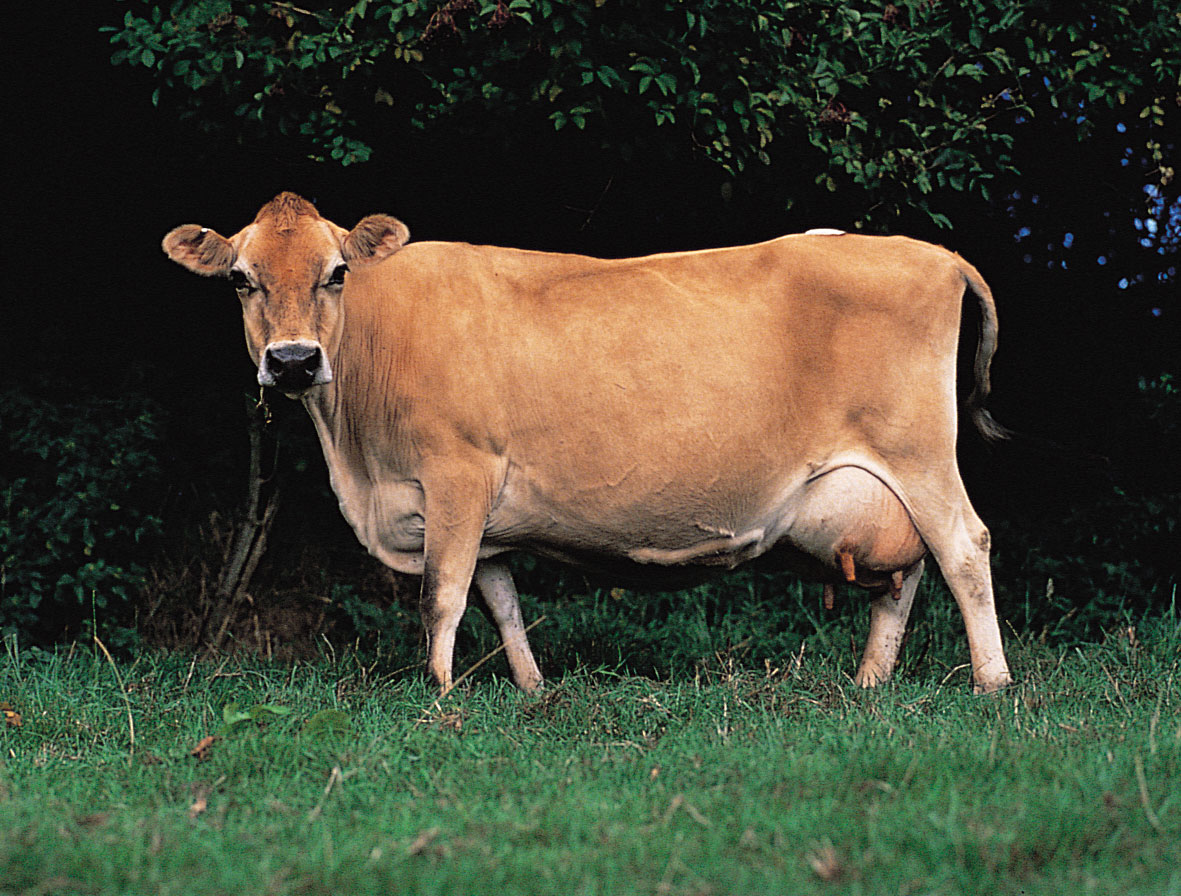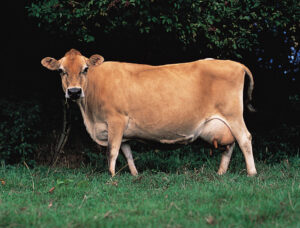When it comes to dairy farming, the choice of cattle breed plays a crucial role in determining the success and profitability of the operation. Among the various breeds available, the Jersey cow stands out for its unique characteristics and exceptional milk production. Originally from the Channel Island of Jersey, this breed has gained popularity worldwide due to its adaptability, high butterfat content in milk, and docile temperament. In this article, we will explore the characteristics of the Jersey cow in detail, understanding its physical attributes, milk production capabilities, and overall advantages for dairy farmers.
Physical Attributes
The Jersey cow is known for its distinctive appearance. They are relatively small in size compared to other dairy breeds, with an average height of around 4 to 4.5 feet and a weight ranging from 900 to 1200 pounds. Their compact body structure, well-rounded hindquarters, and refined bone structure make them easily identifiable.
One of the most notable physical characteristics of Jersey cows is their color. They possess a light to dark shade of brown, often referred to as “fawn” or “island-colored.” Some individuals may exhibit white patches on their face or body, but overall, they have a uniform coloration.
Another distinguishing feature of Jersey cows is their large, expressive eyes along with their alert and intelligent facial expression. This unique appearance adds to their charm and makes them a favorite among many farmers and onlookers.
Milk Production
Jersey cows are renowned for their exceptional milk production capabilities. Despite their small size, they have the ability to produce a significant quantity of high-quality milk. In fact, Jerseys have the highest milk production per unit of body weight among all dairy breeds.
The milk produced by Jersey cows is characterized by its high butterfat content, which gives it a rich and creamy texture. On average, Jersey cows produce around 13,000 to 14,000 pounds of milk per year, with butterfat content ranging from 4% to 5%. This high butterfat content makes Jersey milk ideal for producing various dairy products like butter, cheese, and ice cream.
Furthermore, the milk from Jersey cows has a higher concentration of protein, calcium, and other essential nutrients compared to milk from other breeds. This makes it a healthier and more nutritious choice for consumers.
Advantages for Dairy Farmers
Choosing Jersey cows for a dairy farm comes with several advantages for farmers. Let’s explore some of the key benefits:
- Efficient Feed Conversion: Jersey cows have a remarkable ability to convert feed into milk efficiently. They require less feed compared to other breeds, making them cost-effective for farmers.
- Lower Maintenance Costs: Due to their smaller size, Jersey cows require less space and consume less feed and water. This results in reduced maintenance costs for farmers.
- Adaptability: Jersey cows are adaptable to various climates and environmental conditions. They can thrive in both hot and cold climates, making them suitable for a wide range of geographical locations.
- Docile Temperament: Jersey cows are known for their calm and docile temperament, making them easier to handle and manage on the farm. Their gentle nature reduces the risk of accidents and injuries during milking and other farm activities.
- Longevity: Jersey cows have a relatively long lifespan compared to other dairy breeds. With proper care and management, they can continue to produce milk efficiently for up to 12 to 15 years.
Conclusion
The characteristics of the Jersey cow make it a highly desirable breed for dairy farming. Its unique appearance, exceptional milk production capabilities, and numerous advantages for farmers have contributed to its popularity worldwide. The adaptability, high butterfat content in milk, and docile temperament of Jersey cows make them a profitable choice for dairy farmers of all scales. Whether it’s a small family farm or a large commercial operation, the Jersey cow continues to prove its worth in the dairy industry.
FAQs
1. What is the average lifespan of a Jersey cow?
With proper care and management, Jersey cows can live up to 12 to 15 years.
2. Are Jersey cows suitable for hot climates?
Yes, Jersey cows are adaptable to both hot and cold climates, making them suitable for a wide range of geographical locations.
3. How much milk does a Jersey cow produce per year?
On average, Jersey cows produce around 13,000 to 14,000 pounds of milk per year.
4. What is the butterfat content in Jersey cow milk?
The butterfat content in Jersey cow milk ranges from 4% to 5%, making it ideal for producing rich and creamy dairy products.
5. Do Jersey cows require less feed compared to other breeds?
Yes, Jersey cows have efficient feed conversion capabilities and require less feed compared to other dairy breeds, making them cost-effective for farmers.
Summary
In summary, Jersey cows possess unique characteristics that make them a sought-after breed in the dairy industry. Their physical attributes, such as their compact body structure and distinctive coloration, add to their appeal. Moreover, their exceptional milk production capabilities, high butterfat content, and nutritious milk make them a profitable choice for dairy farmers. With advantages like efficient feed conversion, lower maintenance costs, adaptability to various climates, docile temperament, and longevity, Jersey cows continue to be a favorite among farmers worldwide. Choosing Jersey cows for dairy farming can lead to a successful and sustainable dairy operation.



